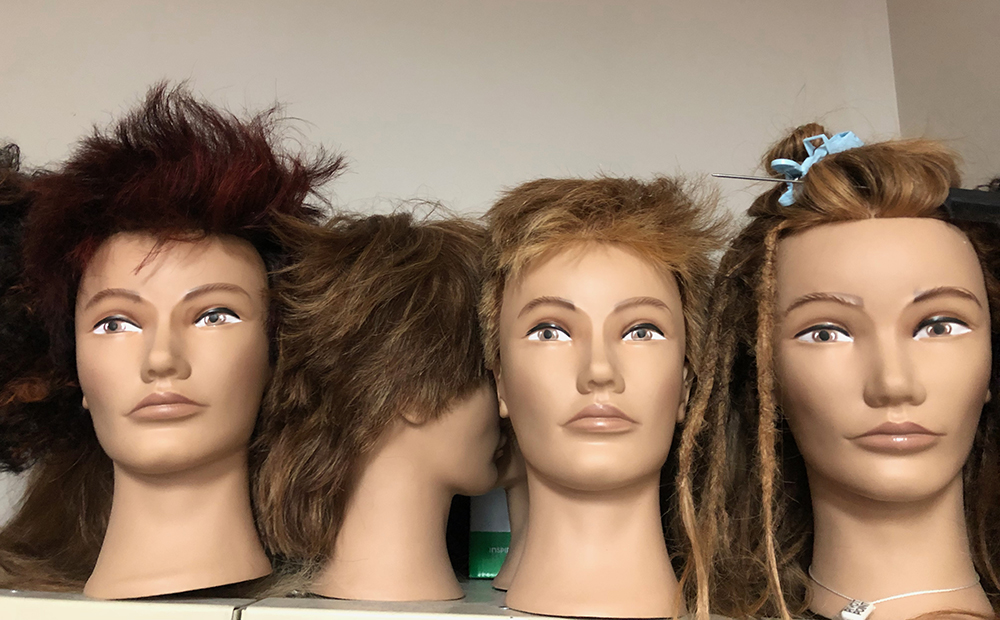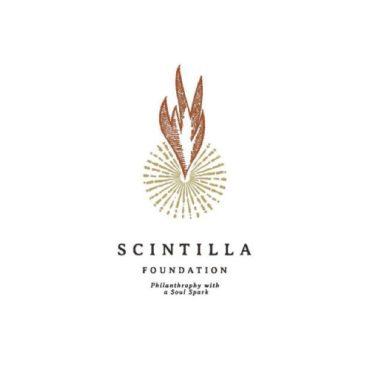Shampoo bowls at Zinke Hair Salon in Boulder, Colorado. | Credit: Frani Halperin/H2O Media, Ltd.
One of the latest trends in the beauty industry is to keep the large volume of waste that salons generate out of landfills. Looking good now means being sustainable. A handful of companies are collecting the hard-to-recycle beauty items, but once they leave salons they seem to disappear into a black hole—or rather a green hole—destination unknown. Should we care?
-
play_arrow
Hair Today, Gone Tomorrow; What Happens to Waste Collected from Beauty Salons? Shannon Young
By Frani Halperin, Executive Producer, H2O Radio
BOULDER, Colo.—Many of us book appointments to get haircuts for different reasons. You might need a trim, perhaps your color is fading—or you might want a new look to get over a bad break-up. A trip to your stylist can leave you feeling like a million bucks, but looking good has a heavy cost. Beauty salons generate a lot of waste—from coloring dyes and foils to high water use—not to mention a lot of hair.
Shane Price saw this waste as a wasted opportunity. He’s the founder and CEO of Green Circle Salons, a company that helps salons recycle garbage specific to the beauty industry, with a goal of diverting 95 percent from landfills.
According to Shane, every minute, there’s about 800 pounds of salon specific waste going into landfills—the hair clippings, foils, color tubes, aerosol cans, paper, plastic, and the residual chemicals left over in the bowl. Green Circle offers a turnkey system where participating salons charge a small “eco-fee” to clients—like a buck or two—to cover the cost of shipping those hard-to-recycle items to the company for processing at recycling facilities, chemical waste facilities, clean energy producers, bio-composite plastic producers, and more.
Shane says over 16,000 “waste warriors”—salon professionals, representing around 4,000 salons in North America, have embraced his program. One of those warriors is Tara Spies, a senior stylist at Zinke Hair Salon in Boulder, Colorado. The salon has made protecting the environment a top priority, and Tara is so on board with the program she calls herself a Green Circle Salon ambassador.
I stop by the salon to see how Zinke has integrated the Green Circle program into their operations. The first stop is at a wall where box upon box of hair dye in shades of blonde, red, and brown sit on shelves. “It’s interesting because you look at it and you say, oh, wow, it’s a lot of colors,” she says, “but then if you think about it, it’s a lot of cardboard and metal and plastic.” Some of the packaging can be recycled locally, but Green Circle takes the rest. “They wash and recycle all our color tubes along with the foils, because when there’s color in there, you can’t just send it to a regular aluminum recycling center.”
When asked what ultimately happens to all the waste, Tara isn’t sure but happy that it’s getting recycled. “To me, recycling, I’m like, Oh, that’s what it is.”
Around the corner in the break room, there are several receptacles where the salon’s waste gets sorted. One is for compost, which is handled by the City of Boulder and collects not only the hair but also food waste. There are three other bins for items that will be sent to Green Circle, one of which is labeled “waste-to-energy” for garbage that will be used to produce renewable energy. A sign taped to the front describes an array of single-use items like waxing strips, nail files, nail polish bottles, gloves, cotton swabs, popsicle sticks, and more that can go to waste-to-energy instead of to the dump.

Mannequin heads that stylists practice on can go to Green Circle, according to Zinke. | Credit: Frani Halperin/H2O Media, Ltd.
The break room also has a container where stylists deposit excess hair color. Green Circle’s website says they work with various partners to separate the oil and water in the color. They then clean the water and blend the oil into fuel. Also, in the break room are about a dozen mannequin heads that stylists practice on. Their stares are a bit unnerving, but Tara says even they can go to Green Circle.
While the benefit of recycling, repurposing, or recovering waste for air, water, and the climate is self-evident, information about the various processors who make this magic happen is less transparent. When asked about speaking with one of their partners to follow the waste on its journey, Shane said other than sending some waste in Canada to Covanta, he was “not at liberty to say” who they work with in the U.S.
Instead, Green Circle offers their members a “Green Guarantee” that they have thoroughly investigated all of their partners “to ensure all the touchpoints of the waste journey are sustainably managed.” That guarantee comes from a company called Carbon Trust. Shane says that in 2019, Carbon Trust performed a full audit of the chain of custody of Green Circle’s waste so the company was able to acquire “Zero Waste to Landfill Certification.” “They either certify you as this is legitimately what happens, i.e., 100 percent of the waste you take away does not go into landfill…or you don’t get that certification,” Shane says, adding that Green Circle is currently in the process of renewing their certification.
Trust But Verify
Back in the late 1980s, President Reagan used the phrase Trust but verify (Russian: Доверяй, но проверяй, Doveryay, no proveryay) in his discussions with Soviet leader Mikhail Gorbachev to negotiate a nuclear arms agreement—the idea being, you take someone at their word but perform your due diligence. In that spirit, I contacted Carbon Trust, but after several emails they would not discuss Green Circle’s certification, writing that “We can talk about how waste streams are verified generally, but we don’t provide specifics about named clients or projects.”
As far as Covanta, the company Shane mentioned working with in Canada, I arranged an interview with its CEO only to have it canceled the day before. A company representative wrote in an email that they could not “directly connect Green Circle to our facilities. Now it might be a small amount that’s a little hard to trace. Given this, we are not comfortable speaking about the Green Circle Salons. Please visit our website for additional information on our services, but beyond that I cannot have anyone speak to it on the record.”
There can be legit reasons for this opacity. Green Circle might want to protect the research and development they’ve invested in from being snagged by competitors—one of which is a beauty waste company called SalonCycle that recently entered the same market space.
Like Green Circle, SalonCycle is focused on hard-to-recycle waste from beauty salons—and apparently wooing customers away from their current solution, which could explain Green Circle’s reticence to name processing partners. Bo Ponchal, the director of SalonCycle, said they built their program “piloting with several different salons who are currently using different recycling services to understand what their pain points were, what they liked about programs, what they didn’t like about it.”
SalonCycle is part of TerraCycle, a large processor that specializes in hard-to-recycle items not accepted by local haulers. And like Green Circle, Ponchal was unable to give specifics about where waste went, saying I would have to contact their PR department.
I did reach out to Shaye DiPasquale, a Senior Communications Associate, North American Public Relations for TerraCycle, but she was unable to connect me with their waste processors, nor would she put me in touch with any salons using their service, citing client confidentiality. I requested an interview with their third-party verifier Bureau Veritas, but they declined, saying SalonCyle’s parent company TerraCycle tracks the material and keeps records. A request to speak with TerraCycle did not receive a reply.
One can feel a bit wasted, tracking waste.
Does She, or Doesn’t She?
So, is recycling an act of faith? We dutifully sort our plastics and paper and put them at the curb. We just trust that it’s not going into landfills, but who has the time or inclination to check?
A popular commercial airing in the late 1950s was for Miss Clairol®, which promoted hair color for women. The ad showed a pretty blonde gazing in a mirror with a voiceover asking, “Does she, or doesn’t she? Only her hairdresser knows for sure.” The premise was that it’s a secret if she were a natural blonde or redhead and none of our business.
But in some ways, it’s like the beauty waste programs. They look good on the outside and everyone—the salons, the clients—we all feel good believing it. We buy in because they’re solving a big problem and we can look ourselves in the mirror for doing our part. But a question lingers. Is that beauty only skin deep? Only recyclers know for sure.

This reporting series was made possible by a grant from Boulder County’s Zero Waste Funding Program. Music credits: The Hair Salon by Monk Turner/Creative Commons 3.0, Mother Earth by Sonic Mystery/Jamendo

















